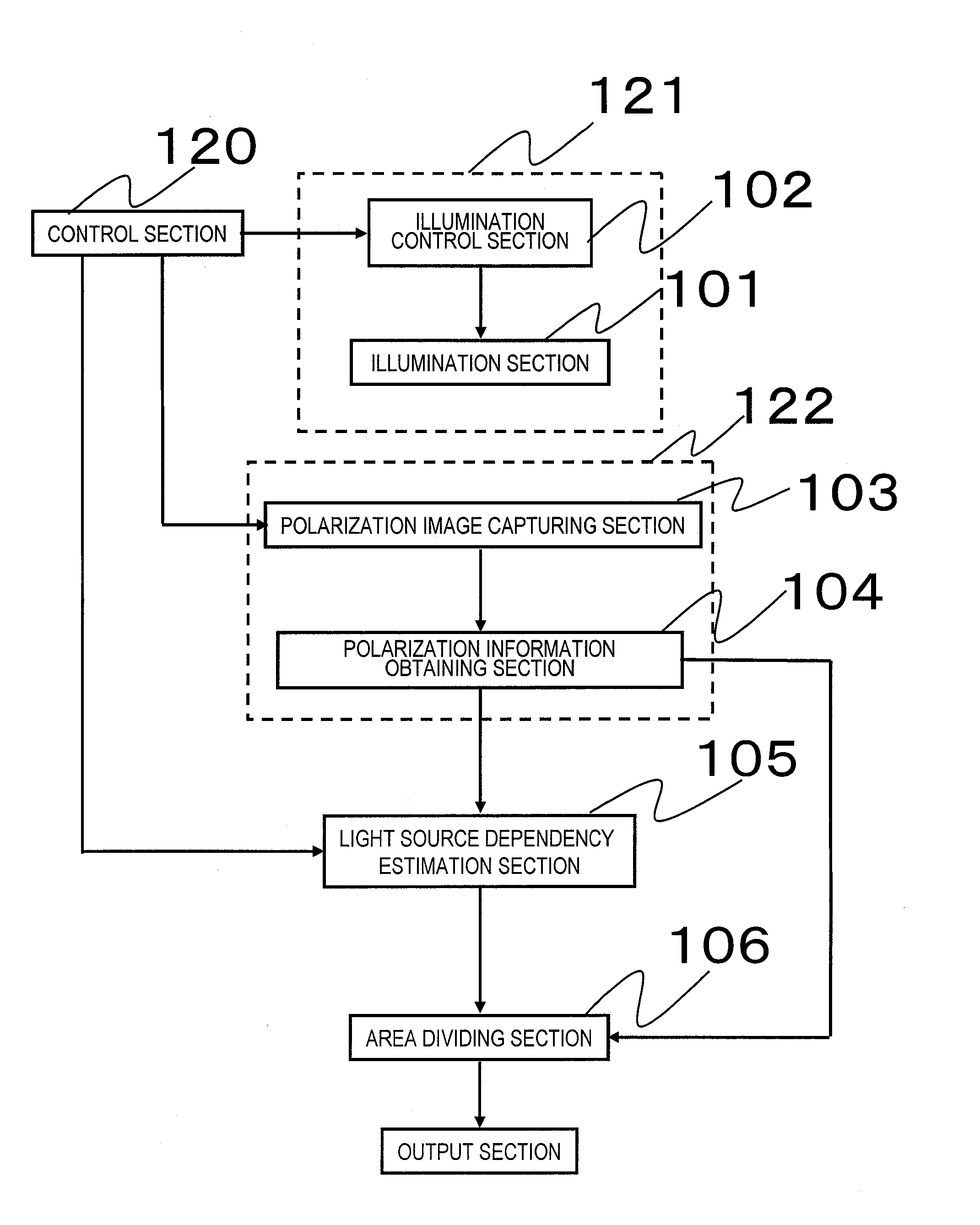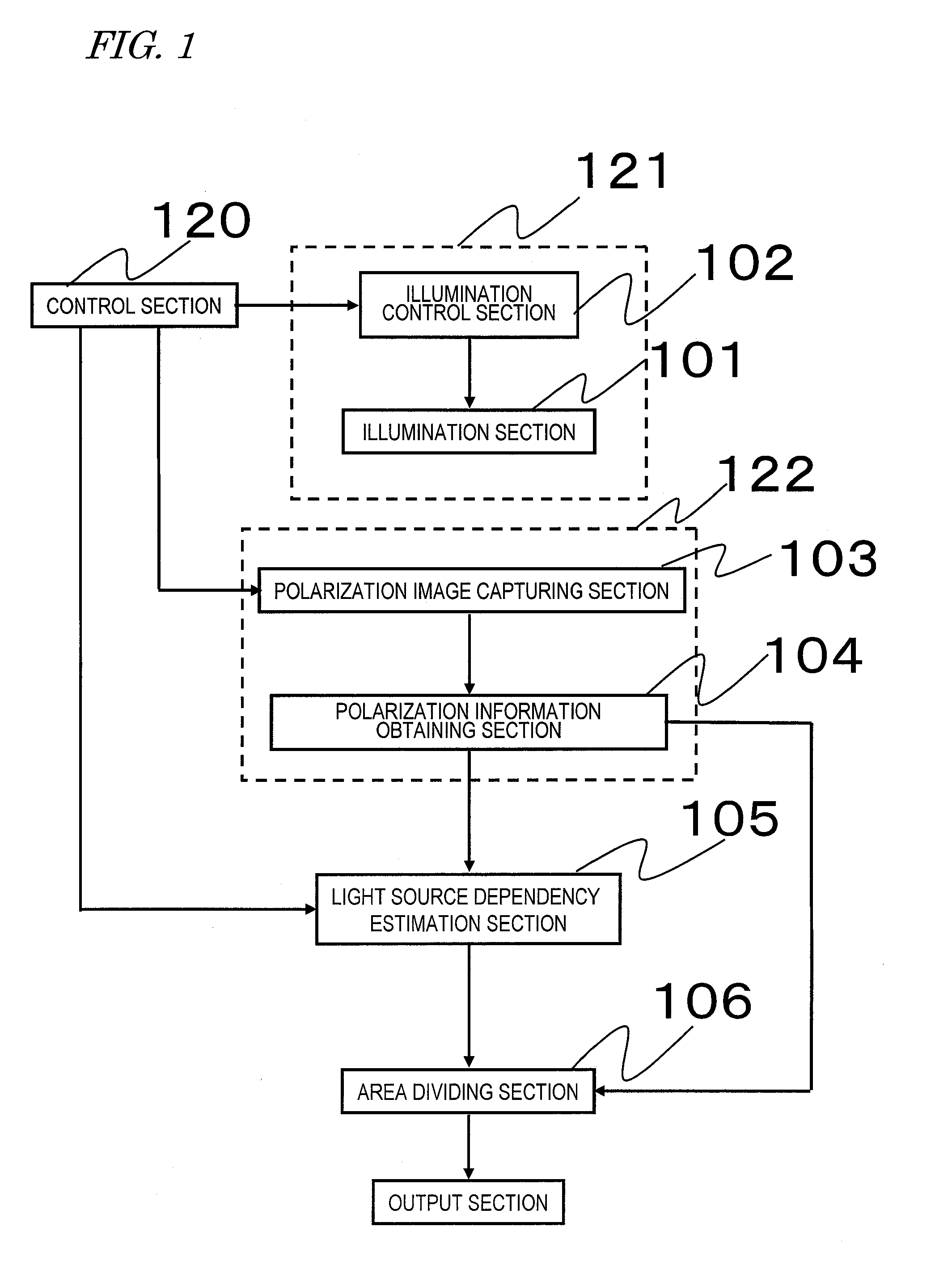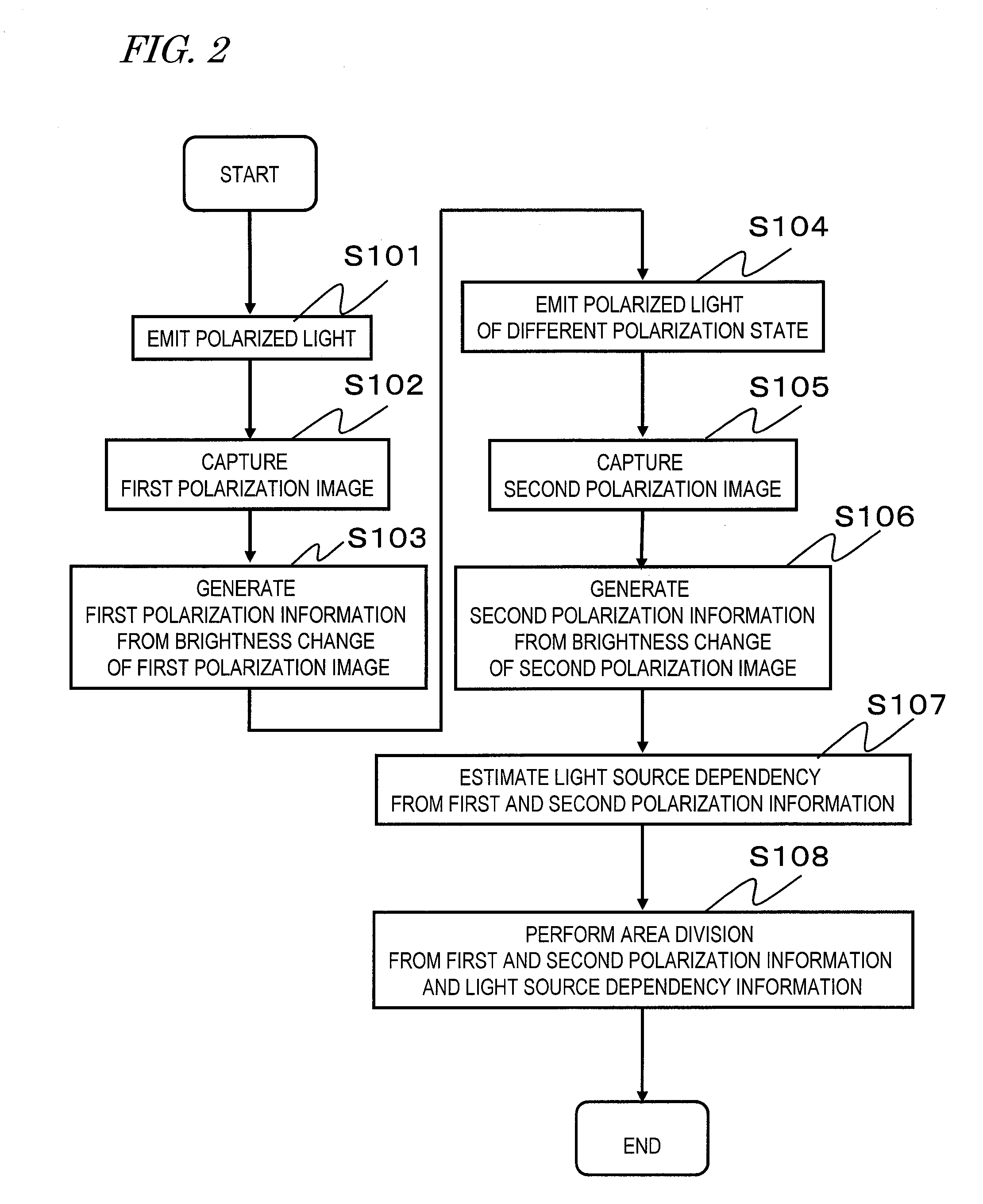Image processing apparatus, image division program and image synthesising method
a technology of image processing and image synthesis, applied in the field of image processing techniques, can solve the problems of loss of polarization characteristics of incident light, and achieve the effect of accurately separating a specular reflection area
- Summary
- Abstract
- Description
- Claims
- Application Information
AI Technical Summary
Benefits of technology
Problems solved by technology
Method used
Image
Examples
first embodiment
[0131]First, the outline of an image processing apparatus according to a first embodiment of the present invention will be described. The image processing apparatus of the present embodiment calculates the light source dependency by changing the polarization state of the illumination section (light source). An area division of the object is performed by using the polarization information and the light source dependency resulting from the change of the polarization state.
[0132]FIG. 1 is a block diagram showing the image processing apparatus of the present embodiment. The image processing apparatus is an apparatus for capturing an image of the object and thereby dividing (performing an area division of) the surface of the object into a plurality of areas of different optical properties.
[0133]The image processing apparatus includes: an illumination unit 121 for emitting linearly-polarized light onto the object while changing the polarization state thereof; a polarization information ob...
second embodiment
[0217]Next, the outline of an image processing apparatus according to a second embodiment of the present invention will be described. The image processing apparatus of the present embodiment calculates the light source dependency by changing the position of the illumination section (light source position). An area division of the object is performed by utilizing the light source dependency resulting from the changes of the polarization information and the light source position.
[0218]FIG. 31 is a block diagram of an image processing apparatus of the present embodiment. In FIG. 31, like elements to those of FIG. 1 are denoted by like reference numerals to those of FIG. 1, and will not be described in detail below. A difference from the first embodiment is that an illumination position changing section 112 is provided, instead of the illumination control section 102. With the image processing apparatus of the present embodiment, the position of the light emitting device 207 is changed ...
third embodiment
[0276]FIG. 52 shows a block diagram of an area dividing system of the present embodiment. In FIG. 52, like elements to those of FIG. 1 are denoted by like reference numerals to those of FIG. 1, and will not be described in detail below.
[0277]A difference from the first embodiment is that an illumination device 108 and an area dividing device 109 are separated from each other, and the area dividing device 109 includes a captured image determination section 107. FIG. 53 is a flow chart showing the flow of a process of an area dividing method of the present embodiment. In FIG. 53, like steps to those of FIG. 2 are denoted by like reference numerals to those of FIG. 2 and will not be described in detail below. Moreover, FIG. 54 shows an exemplary configuration of a camera including therein the area dividing device of the present embodiment, and an illumination device. In FIG. 54, like elements to those of FIG. 3 are denoted by like reference numerals to those of FIG. 3, and will not be ...
PUM
 Login to View More
Login to View More Abstract
Description
Claims
Application Information
 Login to View More
Login to View More - R&D
- Intellectual Property
- Life Sciences
- Materials
- Tech Scout
- Unparalleled Data Quality
- Higher Quality Content
- 60% Fewer Hallucinations
Browse by: Latest US Patents, China's latest patents, Technical Efficacy Thesaurus, Application Domain, Technology Topic, Popular Technical Reports.
© 2025 PatSnap. All rights reserved.Legal|Privacy policy|Modern Slavery Act Transparency Statement|Sitemap|About US| Contact US: help@patsnap.com



